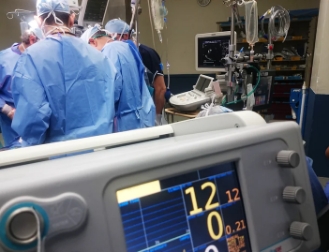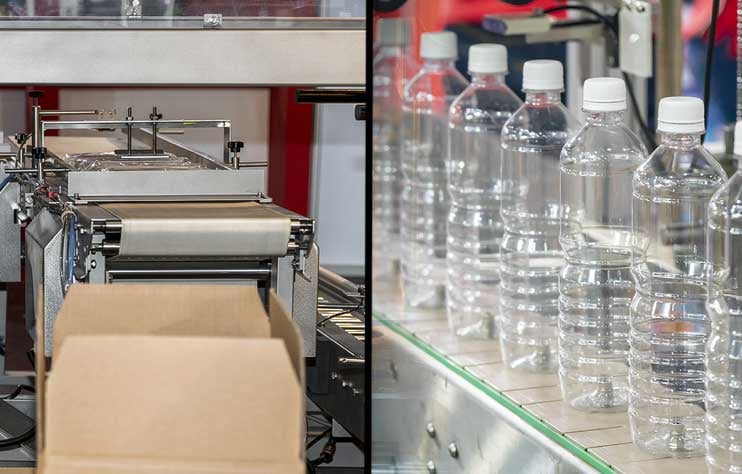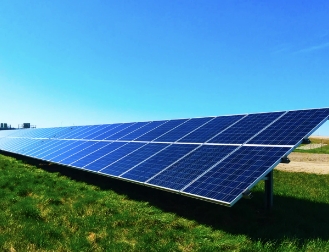
The optimization of materials in the area of product performance is critical to being competitive in today’s market. Unfortunately the best materials for optimized product performance are not always the easiest to assemble, bond, clean or coat. Plasma provides solutions to these difficult manufacturing and university research problems providing clean, activated surfaces that promote and optimize a reliable bond for product performance. Plasma coating enables manufacturers to permanently shift a material’s properties for many industrial applications. Plasma is a clean, environmentally friendly alternative to solvents and complicated, heavily regulated clean lines.

In the Aerospace industry materials are often chosen for optimized mechanical properties like weight, strength or thermal stability. A manufacturing team in this industry often has to compromise these with other attributes of the material. Often one of these attributes is surface energy as it relates to bond strength. Plasma activation and cleaning are often critical processes in the optimization of Aerospace manufacturing.

Plasma processing applications in automobile manufacturing continue to advance. Some of the most common applications are plasma activation and cleaning. The activation of glass or talc filled polypropylene, thermoplastic urethane and thermoplastic olefin for adhesive promotion is common. Another common application is to use an atmospheric plasma source to clean and activate machined mating surfaces prior to sealant application and assembly, for example the use of a sealant between engine components. This activation process provides a covalent watertight seal in mating surfaces. Plasma activation is also commonly used in water based coating applications where materials present a challenge when reliably bonding to a surface with low surface energy. For example, all European auto manufacturers paint vehicles with water-based paints and many prepare surfaces with plasma activation.

Biotechnology
Medical product manufacturing requires the highest levels of surface cleaning and activation. Plasma processing provides the ability to produce an ultra-clean surface. This ability to create an ultra-clean surface can clean materials on a molecular level, removing contamination; other cleaning methods have no chance of removing. Trace level contaminants in the micro-structures or fine cracks of a surface are removed, providing a clean surface free of foreign material, contamination and pyrogens.

The sale of consumer goods in today’s market is heavily driven by cost and quality. Consumers are able to quickly learn about the quality and value of a product due to the availability of information today. Plasma surface activation is a manufacturing tool that allows materials to be bonded with reliability and cost conscious philosophies that were not readily available in the past. The ability to covalently bond to material that previously was difficult to work with due to low surface energy is a thing of the past. An example is the treatment of gaskets in hot water heating systems. Plasma activation allows the adhesive to bind to the gasket material so when it is assembled the gasket does not shift.

Plasma processing is used in many applications in the Electronics industry today. Plasma activation of cell phone components prior to the dispensing of adhesive materials on the manufacturing line is very common today. The activation and cleaning of electronic boards and bond pads prior to plating or conformal coating is another application that is becoming more and more common. Plasma processing is a great way to reduce oxides on the metals commonly used in the manufacturing of bond pads.

The Life Science and Medical industry have seen a great deal of innovation. The advances in device miniaturization, DNA research, and Microfluidics have progressed rapidly with the help of plasma treatment in the manufacturing process. The process of plasma activation in device manufacturing continues to support the use of materials that would not previously be feasible choices. The advances in bonding microfluidic materials used to create medical diagnostic devices continues to provide increases in pressure and the use of materials that were not possible in the past.

The packaging industry has seen many changes in recent years with new materials and innovation in the materials' uses. Plasma treatment to change these materials' surface energy to facilitate and improve the bonding of adhesives, coatings, and inks has been one of our contributions to the packaging industry. Advances in materials like paper, cardboard, plastics, glass, films, foils, and forms create challenges for packaging manufacturers and users when printing or bonding to these new package solutions. Plasma treatment of packaging materials addresses these challenges.
Plasma treatment is used to process semiconductors in the etching of devices, activation and cleaning of wafers, removal of photoresist, cleaning of lead frames prior to packaging, oxide reduction of bond pads prior to bonding and more. Plasma processing advances in technology have been integral in the miniaturization and growth of the semiconductor industry.

Plasma cleaning, activation, etching and coating processes are used in the manufacturing of solar products. Each manufacturing strategy uses these individual technologies in a different capacity to produce the end product. As solar technology changes and new more efficient solar cells are developed, plasma technology will be integral to support these production efforts.

Plasma processing of textiles has many applications from cleaning and activation to the process of coating or functionalizing the surface to promote other processes. These processes can be completed in a batch or in a continuous method. The use of plasma activation in the clothing industry activates fabric so the manufacturing chemistry ensures bonding in downstream processes.

The use of plasma processing in the systematic investigation into further advances in research in the University setting is growing at an alarming rate today. Plasma cleaning, activation, etching, and deposition are used in scientific advancement and research. Significant advances in the last years in perovskites, microfluidics, semiconductors, medical devices, material sciences, and energy are just some of the research areas benefiting from the application of plasma processing.